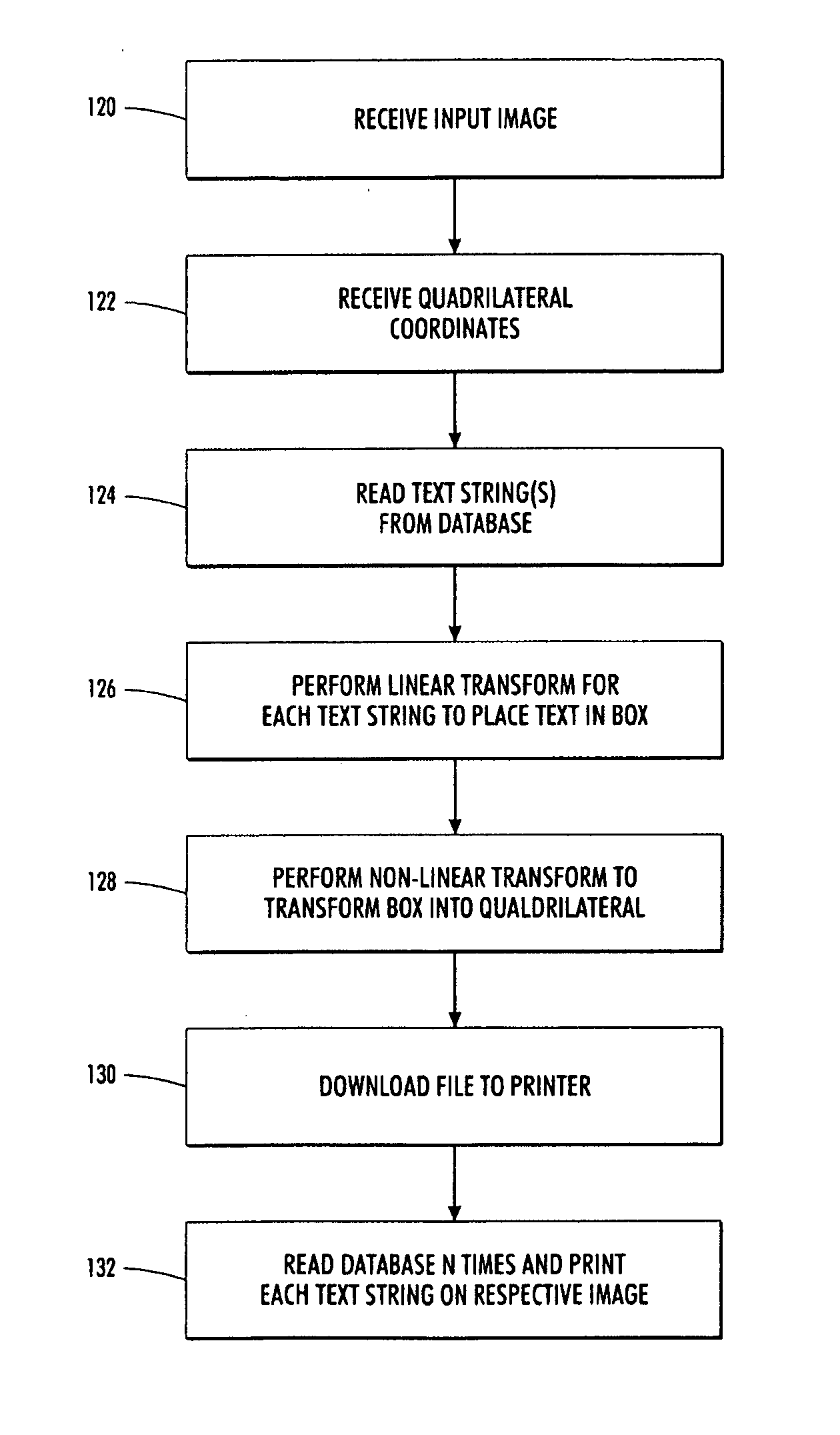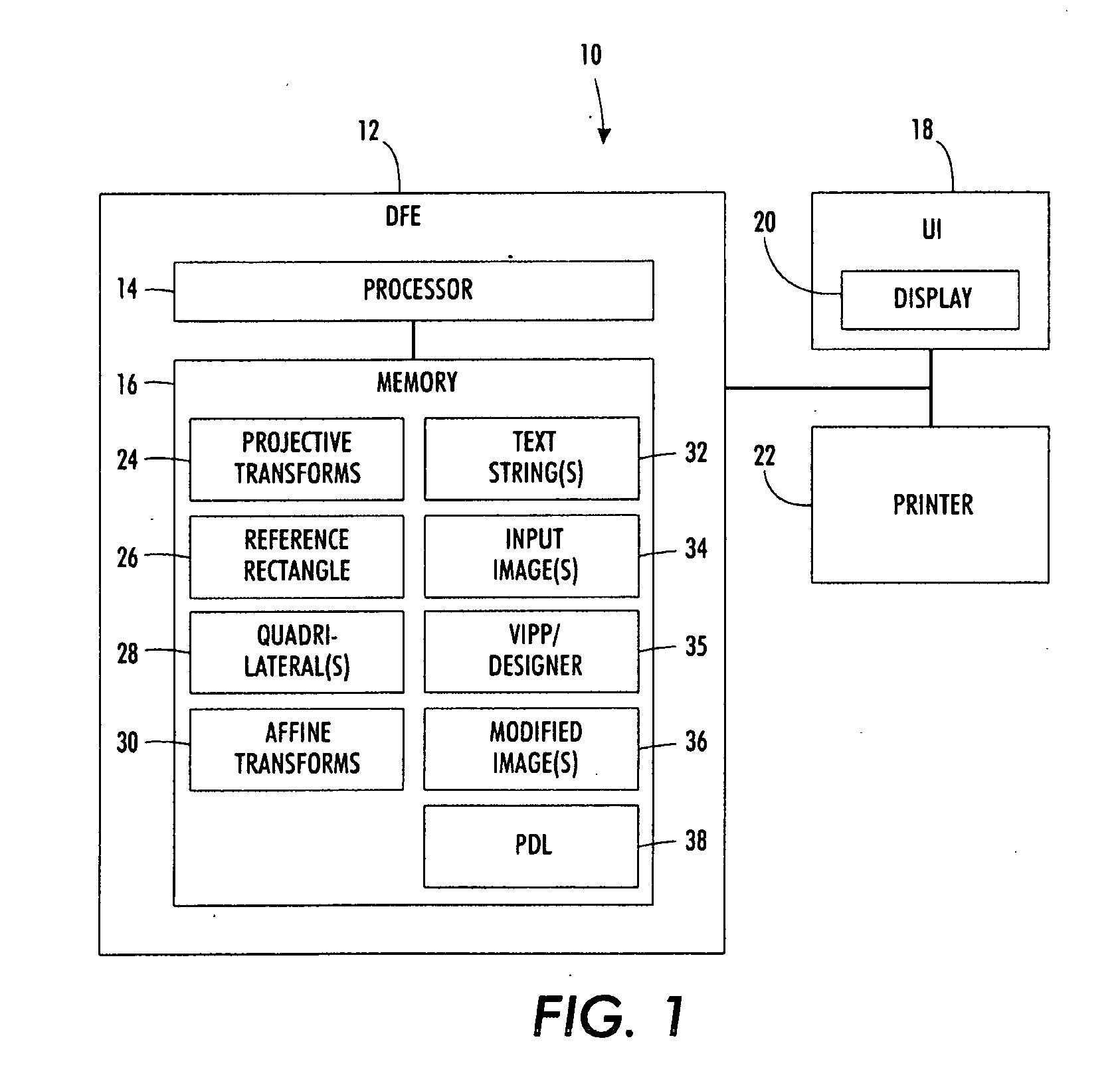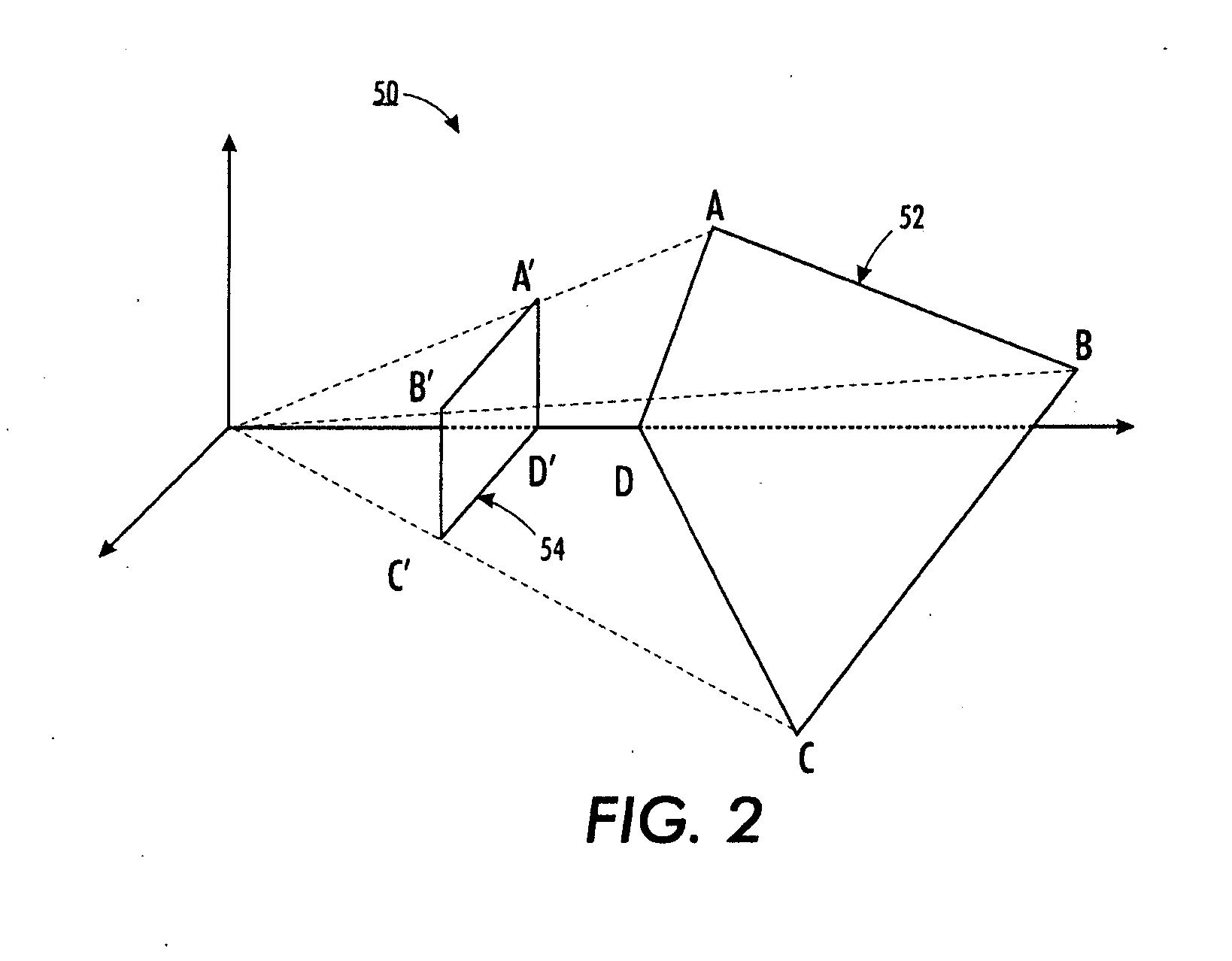Real-time image personalization
a real-time, image-based technology, applied in the field of image personalization systems and methods, can solve the problems of complex processing, inapplicability to real-time, digital front end (dfe)-based processing and printing, and high processing and storage costs, and achieves simple and fast processing, facilitates real-time personalization of electronic images, and facilitates the effect of creating personalized images
- Summary
- Abstract
- Description
- Claims
- Application Information
AI Technical Summary
Benefits of technology
Problems solved by technology
Method used
Image
Examples
Embodiment Construction
[0020]In accordance with various features described herein, systems and methods are described that overcome the above-described problems by restricting the rendering to “flat” (i.e. planar) surfaces, permitting (without requiring) the variable data to be photorealistic, and by approximating some of the transform data with a simple non-physical derivation. In this manner, a real-time 3-D approximation is generated that is sufficiently realistic to catch the eye, but that is also extremely simple to create and compute, thus enabling RIP / DFE implementation. That is, a realistic text overlay for an image is generated in real-time, where “realistic” refers to the geometric structure, omitting texture, lighting and other higher order elements. The described systems and methods are applicable to Variable Information Postscript Printware (VIPP), as well as Automatic Dynamic-Object Replacement (e.g., XMPie) workflows that transmit an image a single time and subsequently only submit the varia...
PUM
 Login to View More
Login to View More Abstract
Description
Claims
Application Information
 Login to View More
Login to View More - R&D
- Intellectual Property
- Life Sciences
- Materials
- Tech Scout
- Unparalleled Data Quality
- Higher Quality Content
- 60% Fewer Hallucinations
Browse by: Latest US Patents, China's latest patents, Technical Efficacy Thesaurus, Application Domain, Technology Topic, Popular Technical Reports.
© 2025 PatSnap. All rights reserved.Legal|Privacy policy|Modern Slavery Act Transparency Statement|Sitemap|About US| Contact US: help@patsnap.com



